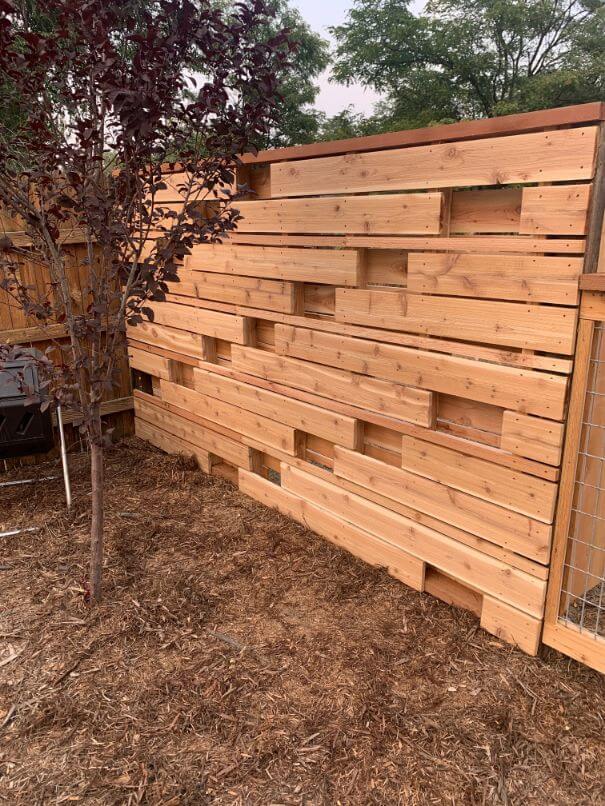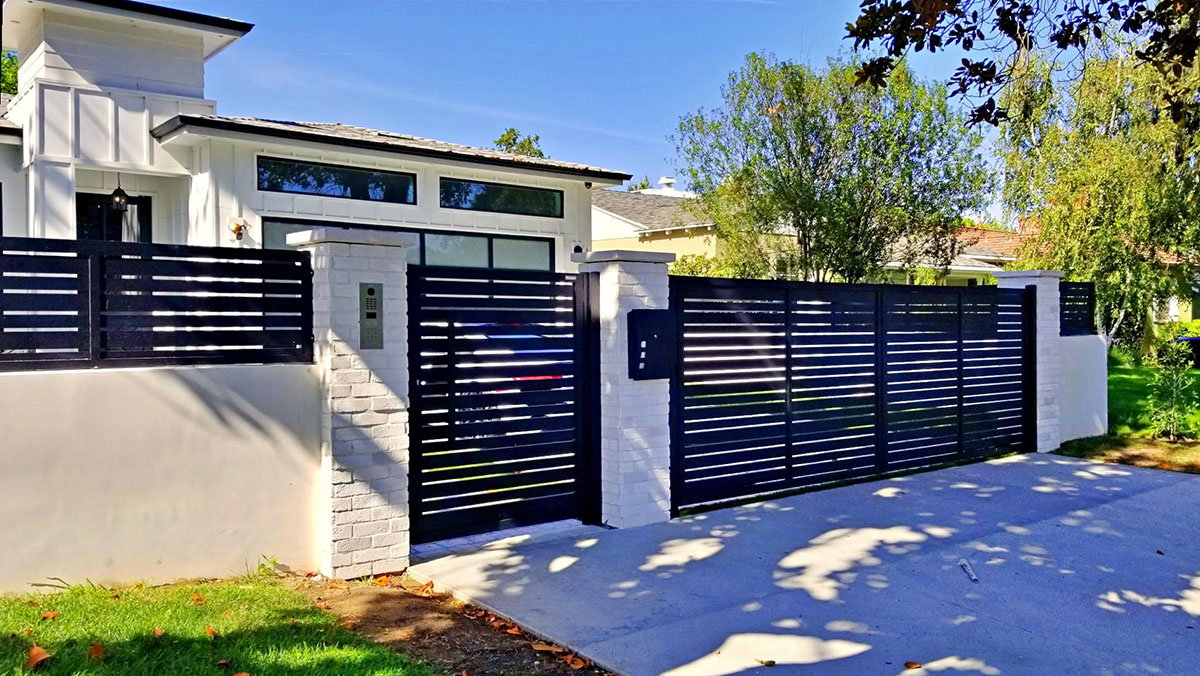All Categories
Featured
When it concerns maintaining a wood fencing, property owners commonly deal with the decision of whether to paint or discolor. Both alternatives have their pros and cons, and the option ultimately depends on your aesthetic preferences, the sort of wood, and just how much upkeep you're willing to devote to. Right here's a thorough contrast to aid you make an informed decision.
The Basics of Paint and Staining
Paint includes covering the wood with an opaque layer of shade. It gives full insurance coverage, concealing the timber grain while offering excellent security versus environmental components.
Tarnishing permeates the wood, enhancing its all-natural elegance while adding a safety layer. Depending upon the type, stains can range from clear to solid, allowing varying levels of wood grain exposure.
Benefits And Drawbacks of Painting
Pros:
Wide Range of Colors: Paint deals unlimited shade alternatives, permitting you to match your fence to your home's outside or individual design.
Longer Long lasting: Top quality outside paint can last up to 5-7 years, calling for much less constant reapplication.
Superior Protection: Paint types a thick, strong obstacle versus dampness, UV rays, and bugs.
Disadvantages:
Peeling and Breaking: With time, paint can split or peel, especially in locations with severe climate condition.
Hides Natural Wood Charm: If you enjoy the natural grain of wood, paint may not be the ideal choice.
Higher Upkeep: Repainting requires scuffing off the old paint, which can be labor-intensive.
![]()
Advantages And Disadvantages of Discoloration
Pros:
Natural Look: Spots preserve and improve the all-natural elegance of the timber, making it perfect for premium hardwood like cedar or redwood.
Much Easier to Reapply: Unlike paint, spots do not peel off or split. Reapplying discolor typically needs less surface area preparation.
Adaptable End Up Options: Spots been available in transparent, semi-transparent, and strong selections, providing various degrees of coverage.
Cons:
![]()
Shorter Life-span: Discolorations, semi-transparent and particularly clear ones, may need reapplication every 2-3 years.
Limited Color Choices: While spots offer natural tones, they lack the wide shade scheme offered with paint.
Less Protective: Spots pass through the timber but don't provide as thick an obstacle as paint, making them a little less safety against extreme climate.
Elements to Consider
Visual Preferences: If you want dynamic colors and complete protection, paint is the means to go. For a rustic and all-natural appearance, go with tarnish.
Wood Kind: Top quality timbers with stunning grains gain from staining, while lower-grade woods can be painted for a refined appearance.
![]()
Environment: In damp or moist environments, paint's thicker barrier might offer far better defense. In moderate or dry environments, discolorations can be enough.
Maintenance Dedication: Painting includes less constant reapplication yet more effort throughout touch-ups. Discoloration needs normal upkeep but is simpler to handle.
Last Thoughts
Both painting and discoloration can effectively secure and improve your wood fencing. The finest alternative depends upon your top priorities, whether they favor appearances, longevity, or simplicity of maintenance. By comprehending the benefits and downsides of each, you can select the finish that lines up with your needs and guarantees your fence remains a standout feature of your home for many years to come.
The Basics of Paint and Staining
Paint includes covering the wood with an opaque layer of shade. It gives full insurance coverage, concealing the timber grain while offering excellent security versus environmental components.
Tarnishing permeates the wood, enhancing its all-natural elegance while adding a safety layer. Depending upon the type, stains can range from clear to solid, allowing varying levels of wood grain exposure.
Benefits And Drawbacks of Painting
Pros:
Wide Range of Colors: Paint deals unlimited shade alternatives, permitting you to match your fence to your home's outside or individual design.
Longer Long lasting: Top quality outside paint can last up to 5-7 years, calling for much less constant reapplication.
Superior Protection: Paint types a thick, strong obstacle versus dampness, UV rays, and bugs.
Disadvantages:
Peeling and Breaking: With time, paint can split or peel, especially in locations with severe climate condition.
Hides Natural Wood Charm: If you enjoy the natural grain of wood, paint may not be the ideal choice.
Higher Upkeep: Repainting requires scuffing off the old paint, which can be labor-intensive.

Advantages And Disadvantages of Discoloration
Pros:
Natural Look: Spots preserve and improve the all-natural elegance of the timber, making it perfect for premium hardwood like cedar or redwood.
Much Easier to Reapply: Unlike paint, spots do not peel off or split. Reapplying discolor typically needs less surface area preparation.
Adaptable End Up Options: Spots been available in transparent, semi-transparent, and strong selections, providing various degrees of coverage.
Cons:

Shorter Life-span: Discolorations, semi-transparent and particularly clear ones, may need reapplication every 2-3 years.
Limited Color Choices: While spots offer natural tones, they lack the wide shade scheme offered with paint.
Less Protective: Spots pass through the timber but don't provide as thick an obstacle as paint, making them a little less safety against extreme climate.
Elements to Consider
Visual Preferences: If you want dynamic colors and complete protection, paint is the means to go. For a rustic and all-natural appearance, go with tarnish.
Wood Kind: Top quality timbers with stunning grains gain from staining, while lower-grade woods can be painted for a refined appearance.

Environment: In damp or moist environments, paint's thicker barrier might offer far better defense. In moderate or dry environments, discolorations can be enough.
Maintenance Dedication: Painting includes less constant reapplication yet more effort throughout touch-ups. Discoloration needs normal upkeep but is simpler to handle.
Last Thoughts
Both painting and discoloration can effectively secure and improve your wood fencing. The finest alternative depends upon your top priorities, whether they favor appearances, longevity, or simplicity of maintenance. By comprehending the benefits and downsides of each, you can select the finish that lines up with your needs and guarantees your fence remains a standout feature of your home for many years to come.
Latest Posts
Laminate Floor Covering: Style Satisfies Durability at Carpet Interiors Floor & Home
Published Apr 19, 25
2 min read
Your Neighborhood Flooring Professionals in Orland Park, IL
Published Apr 19, 25
1 min read
Full Circle Strategic Marketing - Crush Google Rankings with Battle-Tested Search Engine Strategies
Published Apr 19, 25
2 min read
More
Latest Posts
Laminate Floor Covering: Style Satisfies Durability at Carpet Interiors Floor & Home
Published Apr 19, 25
2 min read
Your Neighborhood Flooring Professionals in Orland Park, IL
Published Apr 19, 25
1 min read
Full Circle Strategic Marketing - Crush Google Rankings with Battle-Tested Search Engine Strategies
Published Apr 19, 25
2 min read